The Mortal Realms are grand. Infinite even. And while the Black Library catalogue is not yet as large as it is for 40k, the potential for adventure is as vast as the realms. Cubicle7 aims to let you live those adventures with Soulbound, an full RPG system set in the Age of Sigmar universe.
When I say a full RPG system, I mean it. Some licensed RPGs start and end with a Core Rulebook, with players left to expand from there. This is not one of those RPGs. Likely owing to the Cubicle7’s success with the Fantasy Battles Old World RPG, Games Workshop has given the team the opportunity to expand the system and flesh out the lore—we’ve even seen Soulbound created elements appear back in GW products.
In Part 1 of this review I will cover the Core Rules and the Starter Set. In Part 2 I will review the Bestiary and a couple supplement books, though I will not cover every released supplement (there are a lot with more coming!). Note, the physical quality and layout of all the books are excellent. I will not dwell on that too much, just know that as a product everything here is top notch.
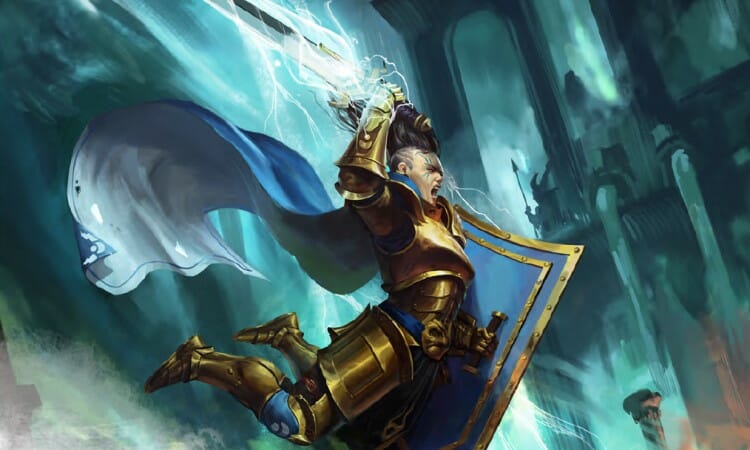
Core Rulebook
Not So Humble Beginnings
The defining feel of a Soulbound adventure is of being epic. This is not a game in which you begin as a bright-eyed adventurer setting out from the big city to dull your blade on goblins or particularly aggressive bears.
Your starting character options are things like Kurnoth Hunters and Knight-Questors. Isharann Tidecasters or Akhelian Emissaries riding Fangmora Eels right from the start. In other words, you’re the heroes and leaders of the tabletop game not the Battleline warriors.

This has the benefit of leaping players right into higher stake scenarios immediately. All non-Stormcast characters play as heroes chosen by the Gods of Order to have their souls entwined via an process called a Binding. The heroes gain benefits from this process but are bound to serve the God-King. Stormcast, while eligible party members, are not technically members of the Soulbound since their souls are needed for reforging.
While I’ve never been upset to roll a Level 1 character in D&D, it’s certainly fun to begin a game feeling like I’m at least Level 5. The Faltering Light adventure included in the Starter Set—more on that soon—begins with a Lord-Arcanum herself tasking you with the kind of quest that can save a city. There’s definitely something fun about that, about knowing that to some NPCs you’re the most powerful being they’ll ever see and knowing that you have so far to go.
System Support
I’m a big believer in the idea that “system matters”. The rules used in your game should support the type of game you want to play. Narrative game? Narrative rules. A game of Apocalypse World and a game of Post-Apocalyptic-Skinned D&D will and should feel different because the underpinning mechanisms are different.
Accordingly, the rules of Soulbound support a world in which the conflicts are epic. This is most notable with combat. Characters and Enemies have three primary combat stats: Melee, Accuracy, and Defense. Rather than have a numerical value, these stats are represented via qualitative attributes like Good, Average, and Extraordinary. These 6 different steps are compared on something called “The Ladder”.

If you’re going to punch someone you compare your Melee Attribute—the step of the Ladder you’re on—to your opponent’s Defense Attribute. If both are the same (let’s say both are Good) then a roll of 4 or higher is a success. If, however, your opponent’s Defense is Great (1 step above Good) then you’ll need a 5 or higher. Anyone who has played Warcry will recognize this comparative system.
The reason I say this enables epic conflict is because this makes your combat stats theoretically unbounded. The denizens of the Mortal Realms, from a lowly grot to a Great Unclean One, range on an incredible scale of power. A bounded die roll, like those employed in common d20 systems, would require ever increasing levels of modifiers and arithmetic. Here, you just exist at a comparison point to a creature and there’s always room to add levels should the need arise.
On top of that, players have two resources—Mettle and Soulfire—that can be spent to generously stack combat in your favor. It’s not out of the question for a prepared group of new players to be capable of taking out something as significant as a Mawcrusha. Wound and damage systems reinforce this idea; members of the Soulbound can dish out and take quite a bit of damage. The way a GM makes combat difficult is to make it epic. Waves and waves of swarming mobs, multiple champions, etc. It’s simply badass.
It isn’t just the base roll. Non-combat rolls are dice pool based. The GM will give you a target called a Difficulty Number (DN) which is composed of two numbers. There is a target number you’re looking for and a number of successes necessary. For example, a DN 5:2 means you’ll gather the appropriate dice and roll. Each die showing a 5 or 6 is a success and you’ll need at least 2 to pass the roll.
Giving the GM two axis on which to adjust probability can be a powerful tool mechanically and narratively. The rulebook describes the first number as the difficulty and second as the complexity. A task can be easy but complex (searching a room), difficult but simple (hitting a bullseye), or both.
It is, however, hard to wrap your head around. The book and GM screen include a table to help provide an relative understanding of how hard a test might be compared to the player’s roll but understanding how to use it is a steep learning curve.
Tough get Tougher
Advancement in Soulbound comes via XP, but is not measured by levels. Instead, earned XP is spent to increase stats and abilities, or purchase additional Talents. This freeform charcter advancement is appropriate here; A Hag Priestess should always feel like a Hag Priestess, just one whose experiences have broadened or sharpened their abilities.
That experience itself does not necessarily come from hacking away at swarms of Stabbas or Crypt Ghouls. Players will have individual goals relating to their backgrounds, and the Soulbound will have group goals. These all come in Short-Term or Long-Term flavors and will be what drives your motivations. Completing them provide a number of benefits, with XP being one of the major ones.
Completing goals also impacts the global Doom level, one of the neatest narrative rules I’ve seen in a while.
A Living Breathing World
The enemies of Order are legion, and the world of Age of Sigmar is not a bright and happy place. If it was, there probably wouldn’t be a need for the Soulbound in general. This is mechanically represented via a concept called Doom. A a numerical value, Doom is invisible to the players. Its impact, however, is not.
Doom acts as a narrative tool for the GM. As Doom rises, the world becomes darker. NPCs more reticent, streets more dangerous, and the civilians of the land more desperate. It also makes some enemies stronger in combat.
When players accomplish large narrative goals, Doom goes down. It can also go down when a Soulbound character sacrifices themselves for their party or goals in an amazing Last Stand mechanism that can make player death exciting. It goes up, however, when evil forces succeed.
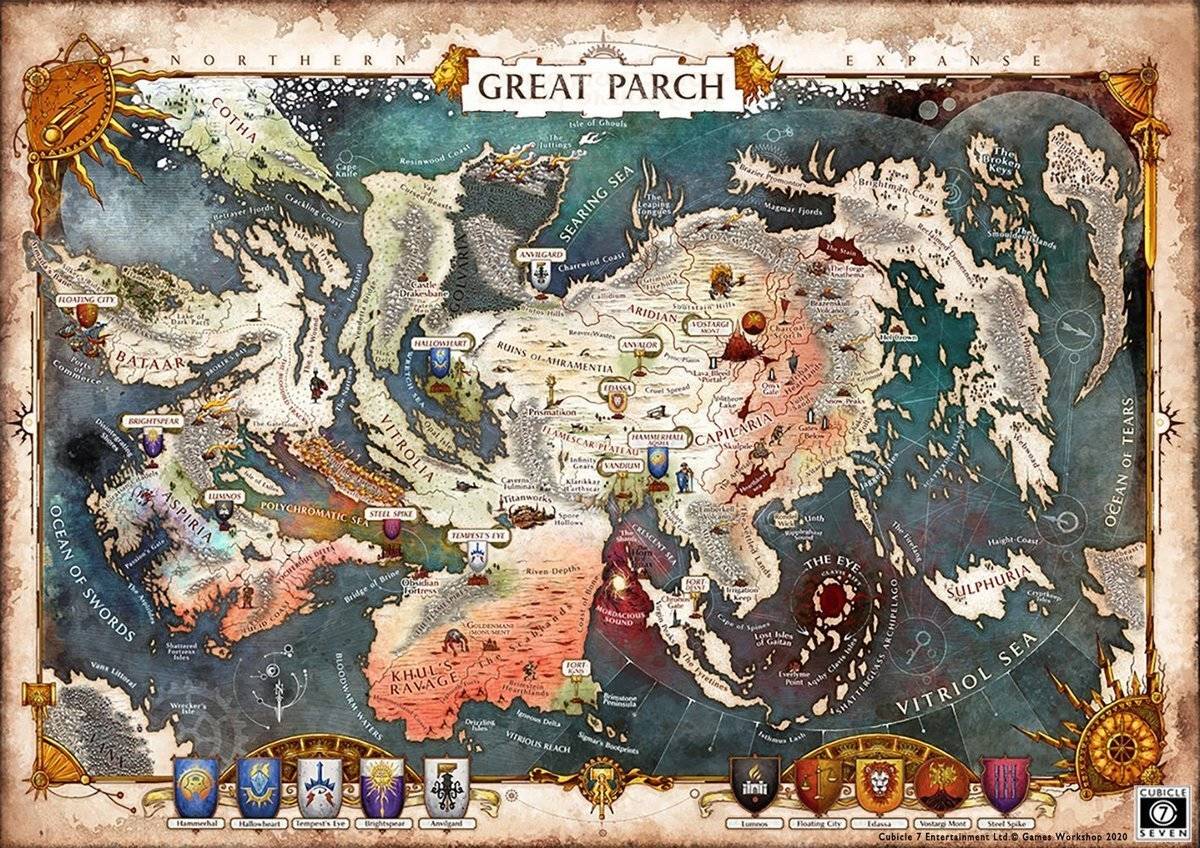
The rules recommend a GM seed the narrative with various rumors (and provides examples). These rumors are meant to hint at larger issues beyond the party’s immediate focus. As the players move on, some rumors are upgraded to Fears and eventually Threats. Rumors that go ignored can cause Doom to rise.
The players get something called Soulfire. Unlike Doom it is spent, but when spent is incredibly powerful. An entire handful of dice can be rerolled, or even simply made a pile of 6s. This is a shared resource however, and selfish use can result in Doom rising.
Core Wrap-up
Soulbound is not a light ruleset. I’d put it on par with games like D&D and Genesys. However, it does get up going much faster. While it can seem like there are a lot of little systems and resources, they’re all quite simple to put together. In fact, the Starter Set does an admirable job of teaching while you play and does so effectively.
Beyond the rules, however, Soulbound’s strength comes in adding strong narrative mechanisms. Things like Doom and Soulfire coupled with the XP system make it easy for the GM to build a breathing world. As a long time D&D DM this is much appreciated. Even the tricky DN system lets me pull narrative out of the results of the roll in a manner that is for more intuitive than simply comparing a single target number.
Additionally, the huge list of supplements that already exist for Soulbound are exciting. This is not just a game, it’s a system with reams of support. Not only do I want to explore more, there is more for me to read and learn. I simply don’t have the time to create entire adventures or systems myself, this kind of support is exactly what I need.
Starter Set: Faltering Light
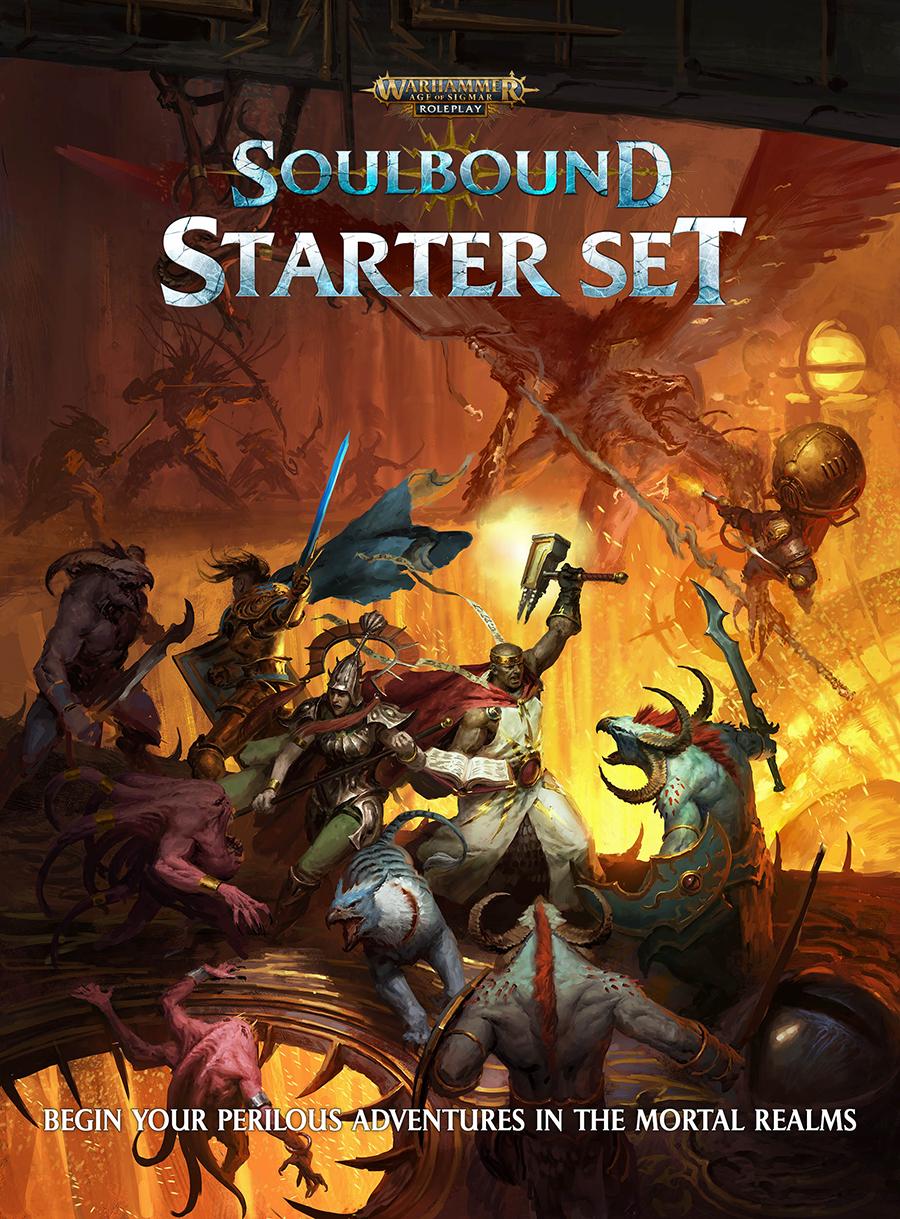
Faltering Light takes place in the fire-scorched realm of Aqshy, in an area known as the Great Parch. This is the primary location for Soulbound’s initial content push. Players are summoned to the ancient city of Brightspear and tasked with exploring the deep Undercity with the goal of figuring out how to repower the city’s beacon. This device projects a physical shield that will defend the city from Chaos incursions.
The physical box set is a fantastic product. References are printed on the inside of the lid which can double as a GM screen if you don’t have one. The staple-bound adventure is presented cleanly, with natural “chapter breaks” that can guide your evenings. The character sheets especially are gorgeous, featuring background information for the character and rules references.
Before I talk about the adventure, I want to give a special shoutout to the Brightspear City Guide. This 60 page bound book fleshes out every major locale in the city, including some not relevant to the included adventure. It also includes a number of launching points to continue the campaign. Each story seed includes Rumors you can weave into your Starter Adventure and describes how to upgrade them to Fears and Threats. This is a fantastic supplement notably missing from other Starter Sets.
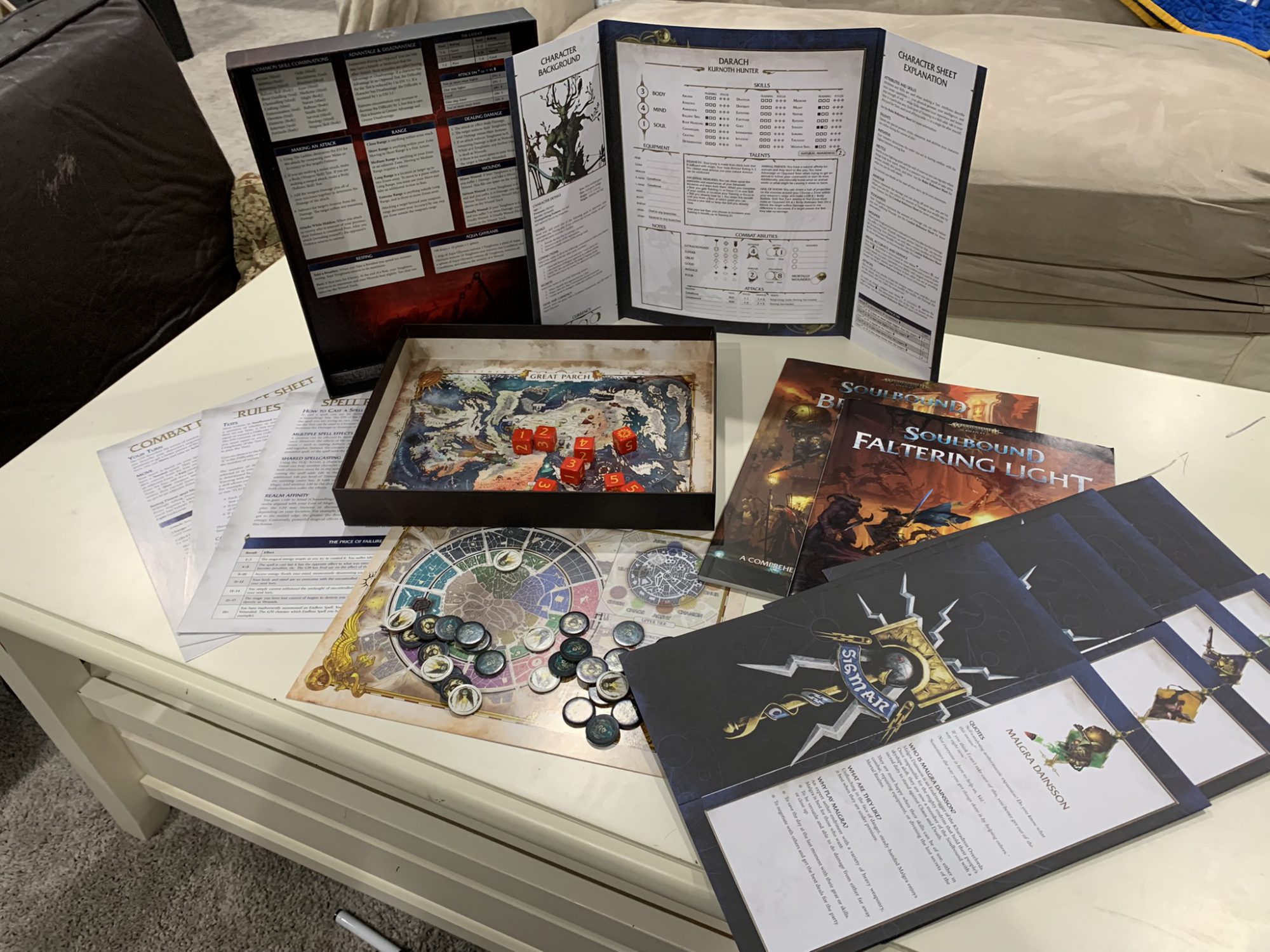
The adventure itself is engaging, though does take a bit to get going. The opening few moments are effectively a lore dump. While it serves as an effective way to teach players how to roll and does so in a manner that doesn’t require the GM to have done any prep or reading before playing, I’m not a fan of tying background exposition and story to pass/fail rolls.
After meeting the Lord Arcanum, players are briefed on where they need to go and warned of a potential traitor (gasp!) before meeting a few of the potential suspects. This is handled great; this is a minor spoiler but the GM has the discretion to choose which of these characters is the traitor and provided with the information necessary regardless of which is chose. I love this flexibility, because it means you can blindside your players OR reward clever thinking depending on what feels best for the story.
The strongest part of the adventure comes in Undercity Exploration. The Undercity is under the growing influence of T’zentch and thus is impossible to map and not strictly fixed in reality. Rather than provide a map that players must explore, Navigation rolls are made after each encounter. Depending on the roll you move through a sort of Flow Chart of Doom that drives you inevitably towards the conclusion while peppering your evening with combat, narrative, and cool things to look at. Not only does it work seamlessly, it fits the setting perfectly.
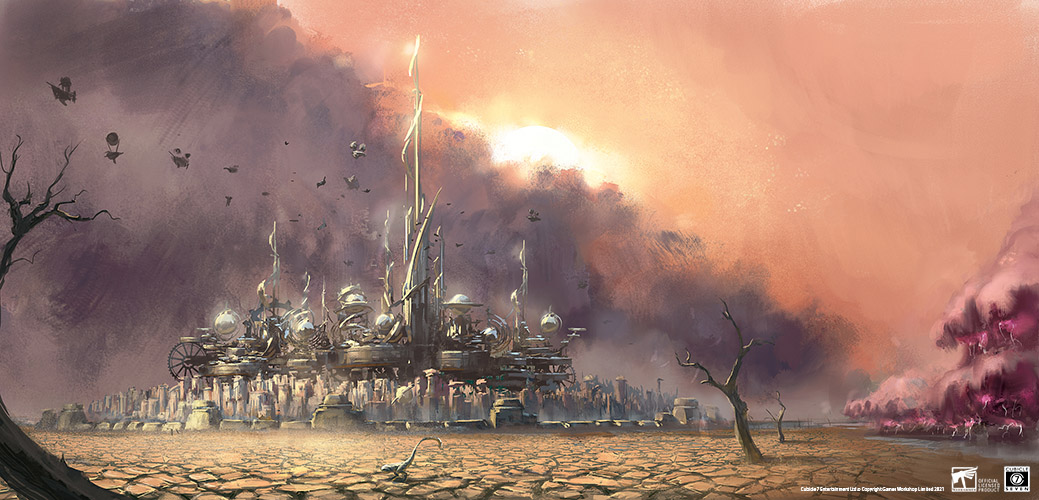
I won’t spoil the finale, but suffice to say it wraps well. In particular, it showcases both how dark the worlds of Warhammer can be and also reinforces how epic Soulbound adventures are. Nothing like spending a few nights feeling like demigods only to glimpse an enemy that would ruin you to open your eyes to the depth of the world.
I’m looking for a Starter Set to do two things: teach players how to play and GMs how to run a game. I judge a Starter Set on how well it accomplishes these goals for folks who have never picked up a character sheet in their lives. Overall, I think this is a box that will go over great with experienced RPG players and GMs, but might be tough on a new-to-RPGs GM. It is clearly written with the goal to make that possible, it just feels to me like it requires a bit of work similar to the Alien RPG Set.
Closing Thoughts
This is a premier RPG set in a premier world. The Age of Sigmar universe is an expansive, epic world, and Soulbound is a game to match. With all the interlocking systems service to reinforce it, the game feels like Age of Sigmar.
Soulbound has been out for a little over a year at this point, and Cubicle7’s support of this new line is nothing short of amazing. I will detail a few of the supplements next week, but suffice to say for now that everything has an attention to detail and care that comes from a love of the setting.
Cubicle7 provided review copies of the Core Rulebook and Starter Set for this review.


